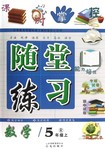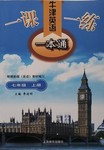题目内容
At first glance,why anyone would want to save California condors(秃鹰) is not entirely clear. Unlike the closely related Andean condors with their white neck feathers,California condors are not much to see. Their dull black color,featherl'ess head and neck and oversized feet are hardly signs of beauty oi^ strength. Their appeal begins to become evident when they take flight. California condors can fly almost effortlessly for hours,often covering hundreds of miles a day 一 far more than other creatures of the air.
When it was discovered that the condor population was becoming dangerously small,scientists and zookeepers sought to increase condor numbers quickly to preserve as much of the species’ geneic(基因的) diversity as possible. From studying wild condors,they already knew that if a pair lost an egg,the birds would often produce another. So the first and sometimes second eggs laid by e往ch female were removed,and artificially hatched. Such techniques quickly proved effective.
Despite these successes,the effort to save California condors continues to have problems. Artificially hatched condors released(释放) to the wild have died at what to some people are alarmingly high rates. Others have had to be brought back again after they acted foolishly.
Some of the odd behavior on the part of these re-released birds is hard to explain. At times they landed on people's houses,walked across roads and airport runways,walked into park visitor centers and fast food restaurants,and took food offered by picnickers and fishermen. None are known to have died by doing so,though. Most recently,some of the first chicks hatched in the wild died after their parents fed them bottle caps,pieces of plastic and other man-made objects.
Mike Wallace,a wildlife specialist at the San Diego Zoo,has suggested that some of the condors’ problems represent natural behavior that helps them survive. The real key to successful condor reintroduction lies in properly socializing young condors as members of a group that follow and learn from older,preferably adult birds. That,he argues,was missing from earlier condor releases to the wild.
28. What is the California condor's most impressive feature?
A. Its beautiful colors.
B. Its remarkable flying ability.
C. The large size of its neck and feet.
D. The similarity it has to the Andean condor.
29. In the initial stage of the conservation programme, .
A. eggs were taken from the nests of wild condors
B. female condors were caught and studied carefully
C. scientists and zookeepers tried to create genetic diversity
D. condors were encouraged to produce a lot more eggs
30. What did some of the condors released into the wild do?.
A. They adapted surprisingly quickly to their new surroundings.
B. They showed a tendency to seek out human contact.
C. They died from eating too much fast food.
D. They kept changing their eating habits.
31. According to Mike Wallace,there will be fewer problems if .
A. young condors are trained not to eat man-made objects
B. the chicks are surrounded by older birds when they hatch
G. the chicks are released into the wild as soon as they hatch
D. young condors are taught appropriate behavior by adult birds
(自然)
本文是说明文。文章介绍了科学家为保护加州秃鹫所做出的努力、出现的问題及解决方法等。
28. B.细节理解题。根据第一段的Their appeal beginstobecomeevidentwhentheytakeflight. California condors can fly almost .effortlessly for hours,often covering hundreds of miles a day — far more than other creatures of the air 可知,虽然 加州秃鹫外表不显眼,但是却是飞行高手。
29. A.推理判断题。根据第二段的So the first and sometimes second eggs laid by each female were removed,and artificiay hatched 可知,为增加加
州秃鹫的数量,科学家在了解了野生秃鹫的习 性后,把雎秃鹫下的头几个蛋拿回来进行人工 孵化。
30. B.推理判断题。根据第四段的theylandedon people* s houses,walked across roads and airport runways,walked into park visitor centers and fast food restaurants,and took food offered by picnickers and fishermen可知,这些人工鮮化后 被放归野外的秃鹫好像对人没有畏惧感,它们 喜欢和人接触。
31. D.细节理解题。根据最后一段的The real key to successful condor reintroduction lies in properly socializing young condors as members of a group that follow and l??m from older,preferably adult birds 可知,Mike Wallace 认为人 工孵化的秃鹫想在野外成功生存的话,必须让 它们提前融入集体生活,以便跟成年秃鸷学习 生存的本领。

 开心蛙状元作业系列答案
开心蛙状元作业系列答案 课时掌控随堂练习系列答案
课时掌控随堂练习系列答案 一课一练一本通系列答案
一课一练一本通系列答案